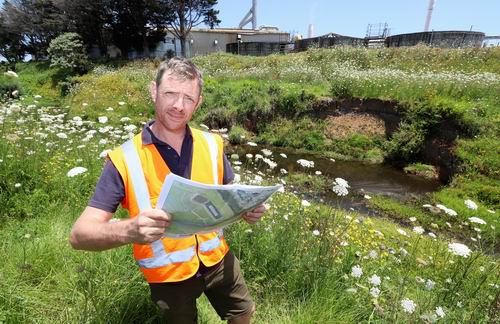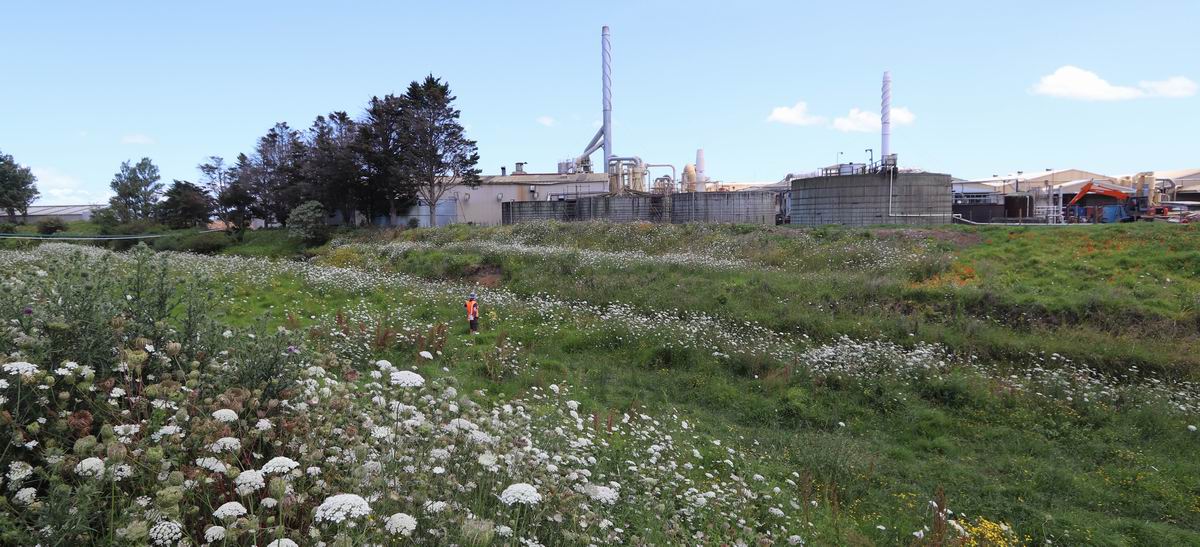Crucial role for humble paddock in upcoming flood works
14 Jan 2020, 9:03 AM
An estimated 90,000 tonnes of soil will be removed over the next several months to help transform a humble paddock into a crucial new 400-metre long flood scheme spillway behind Juken New Zealand’s Kaitaia triboard mill.
Pending approval of associated resource consents and archaeological authority, the work is expected to be carried out between February and May this year as part of the second stage of the Northland Regional Council’s ongoing multimillion-dollar upgrade of the Awanui flood scheme.
Forestry and wood processing company JNL is allowing its land to be used for the upgrade which will give better flood protection to its Whangatane Dr triboard mill (one of the area’s largest employers) as well as allow a crucial scheme upgrade.
The regional council’s Te Hiku constituency representative Councillor Colin ‘Toss’ Kitchen says the existing aging spillway – which will be retired within the next 18 months or so for a new life as a wetland – sits literally just a stone’s throw from the mill.
 Regional council River Management Engineer Barney Brotherhood surveys eroding stopbanks behind Juken New Zealand’s Kaitaia triboard mill. The council is planning to build a new spillway nearby soon as part of the second stage of an ongoing multimillion dollar Awanui flood scheme upgrade.
Regional council River Management Engineer Barney Brotherhood surveys eroding stopbanks behind Juken New Zealand’s Kaitaia triboard mill. The council is planning to build a new spillway nearby soon as part of the second stage of an ongoing multimillion dollar Awanui flood scheme upgrade.
The new roughly 20-metre wide, 400-metre long spillway will be built approximately 100m to the south-east on what is currently a paddock. Roughly 90,000 tonnes of soil (about 50,000 cubic metres) will need to be removed during the paddock’s transformation.
“This work will account for more than a third of the total $1.02 million expected to be spent upgrading the scheme during the current construction season, which weather-permitting, will run until May.”
Councillor Kitchen says while the new works will be about two kilometres downstream of Kaitaia itself, they’ll form an integral part of the upgraded scheme, helping to carry potentially damaging floodwaters away from the town more efficiently and quickly.
“The scale and cost of the Awanui upgrade overall means work began in earnest last year but will need to continue in stages over several construction seasons between now and 2027.”
Councillor Kitchen says much of the aging scheme was built about a century ago, meaning the regional council’s focus until fairly recently had necessarily been on much-needed maintenance and more immediate repairs.
“However, this upgrade will help future-proof the scheme for a number of years – including predicted effects from climate change – as well as deliver a considerably higher level of protection for Kaitaia and surrounding areas.”
All going well, the council expects the latest phase of construction to take about eight to 10 weeks and be completed by May.
The new spillway will then be given a few months to stabilise and for grass cover to establish before the spillway is diverted through it next year, probably about three months ahead of winter/the wetter months. The 400m of current spillway behind the triboard mill will then be retired as a wetland.
Councillor Kitchen says scheme-wide, future flood risks will be mitigated largely through extensive modifications and improvements to stabilise existing stopbanks, which will allow the Awanui River – including critical sections upstream of the triboard mill – to carry up to 15 percent more floodwaters.
Designed to protect urban Kaitaia in a ‘once in a century’ type flood and a 1:20 year event in surrounding rural areas, the work is one of several key projects at the heart of the regional council’s NRC’s Long Term Plan (LTP) 2018-2028.
“It’s very important work; without the added protection this upgrade will offer, a 1:100-year flood in urban Kaitaia could cause tens of millions of dollars in damage and potentially put lives at risk.”
Seventy percent of the work is being funded by ratepayers Northland-wide via a regional flood infrastructure rate, with the balance funded locally through a targeted Awanui River Management Rate.
The JNL spillway will effectively be the second new one built in just two years as part of the upgrade; an emergency spillway opposite the slow-moving ‘Bell’s Hill’ slip site was built last summer on the site of the former Firth concrete works in Kaitaia itself.
The regional council has been monitoring and managing the Bell’s Hill slip site for many years worried it could potentially slip into – and block – the nearby Awanui River.
“While that spillway is expected to probably only carry floodwaters once or twice a year, crucially – should the Bell’s Hill slip ever collapse unexpectedly and block the Awanui River’s existing flow path – it’s big enough to carry the river’s entire flow.”

A wider view of the existing spillway stopbanks behind Juken New Zealand’s Kaitaia triboard mill. The Northland Regional Council is planning to build a new roughly 400m long spillway about 100m to the south-east soon as part of an ongoing Awanui flood scheme upgrade.
